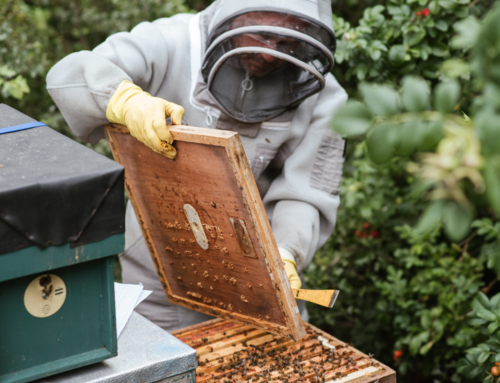An apiary (also known as a bee yard) is a location where beehives of honey bees are kept. Apiaries come in many sizes and can be rural or urban depending on the honey production operation.
Apiaries are usually situated on high ground in order to avoid moisture collection, though within proximity of a consistent water source—whether natural or man-made—to ensure the bees’ access. Additionally, ample nectar supplies for the bees as well as relatively large amounts of sun are considered.
They are often situated close to orchards, farms, and public gardens, which require frequent pollination to develop a positive feedback loop between the bees and their food sources. This also economizes on the bees’ pollination and the plants’ supply of nectar.
An apiary may have hive management objectives other than honey production, including queen rearing and mating. In the northern hemisphere, east and south facing locations with full morning sun are preferred.
In hot climates, shade is needed and may have to be artificially provided if trees are not present. Other factors include air and water drainage and accessibility by truck, distance from phobic people, and protection from vandalism.
If too many hives are placed into an apiary, the hives compete with each other for scarce resources.
Consider a circle around an apiary with a three-mile (5 km) foraging radius covers 28 square miles (73 km2). A good rule of thumb is to have no more than 25–35 hives in a permanent apiary, although migrating beekeepers may temporarily place one hundred hives into a location with a good nectar flow.
Location fundamentals for your beehives:
- Face your hive to the southeast. (in the Northern Hemisphere)
- Position your hive so that it’s easily accessible come honey harvest time.
- Provide a windbreak at the rear of the hive. …
- Put the hive in dappled sunlight. …
- Make sure the hive has good ventilation.
- Make sure there is source of water nearby.
- May sure to know when your neighbouring farmer is likely to spray crops
- Before placing any bees in your own land, consider the reaction of your neighbours.





